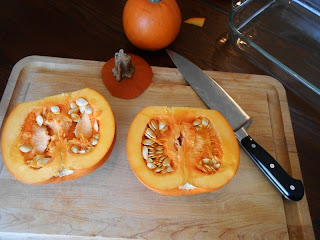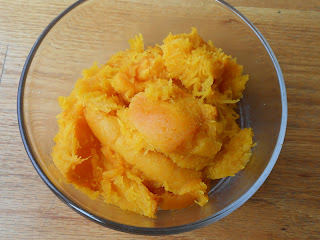Tip #1: Bake items the night before. Choose items that can be made ahead so you can enjoy your guests. Muffins and Coffee Cakes are a great choice.
Tip #2: Consider Pot-luck: You can ask other guests to bring things so you aren't spending too much time in the kitchen. Again, the idea is to be able to enjoy your guests. If you want to do the baking, you can ask guests to bring an egg, meat or vegetable dish. Or just ask them to bring some fresh fruit, which is always a great part of any brunch.
Tip #3: Even if you are making everything yourself, choose dishes that can be made ahead of time and kept warm in the oven. Things like egg casseroles, french toast, or hash browns are good options. Cover with tin foil and put in the oven at 250. Or you could make MOST of the meal ahead of time and have just ONE item that needs to be made on the spot - pancakes, eggs to order, etc.
Tip #4: Have several drink options - Coffee, Tea, (and Decaf coffee or tea) as well as a variety of juices. Some brunch cocktails can be great too - Mimosas and Bloody Marys can be made by the pitcher quickly and easily just before serving the food. Sure, it's nice to make individual drinks, but we're trying to keep it EASY here! :)
Here are some Menu Ideas. Just click on the link for the recipe:
Go British with fancy teas and freshly made Scones:
Recipe for Traditional Cream Scones
Great Coffee Cakes you can make ahead:
I also make a cranberry almond coffee cake by adding
one cup chopped fresh cranberries to this recipe.
Muffins can also be made ahead and are a healthier option:
(okay, so these ones are not as healthy as the
ones above, but they are my favorite!)
Or do traditional breakfast fare with these Homemade Pancakes:
You can even "carmelize" some apples to put on top - just peel and slice 2-3 large apples, put them in a sautee pan, add 1 Tbsp butter plus 1 Tbsp brown sugar, and cinnamon (or other spices to taste) cook on medium heat until the apples have softened and the sauce is syrupy like caramel.

























.jpg)









.JPG)





.JPG)


.JPG)


.jpg)

